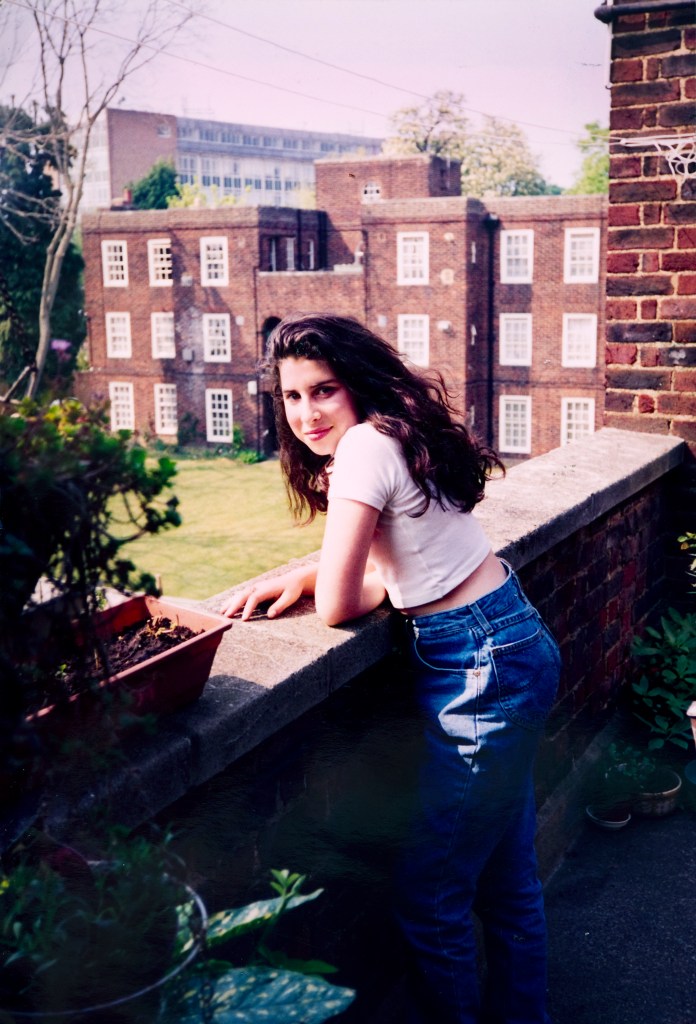(Photo courtesy of the Jewish Museum)
The week after tattoo artist Henry Hate gave Amy Winehouse her famous pin-up girl tattoo, she spontaneously came back to the shop and asked to walk his dog. “I gave her the lead and told her she could, if she’d go with her. I had an American Bulldog and they’re super stubborn,” Henry tells me over the counter of his shop in Shoreditch.
Videos by VICE
“Off they went, and I thought Amy would just walk around the corner for 20 minutes, but she was gone for over an hour-and-a-half, and when I looked at the clock I was like, ‘Holy shit.’ I started to panic and thought, ‘What happens if my dog has been hit by a car?’ I didn’t have Amy’s phone number or anything to go by.”
Eventually, Amy and the dog came back. Four days later she returned with a dog toy. This kind of impulsiveness wasn’t out of the ordinary, says Henry, and nor was the thoughtfulness behind her gestures.
In July of this year it will be six years since Amy Winehouse’s death. She died at 27, the subject of brutal treatment from the British tabloids while battling addiction and bulimia; her brother, Alex, is among those who believe it was the latter that killed her, rather than the alcohol.
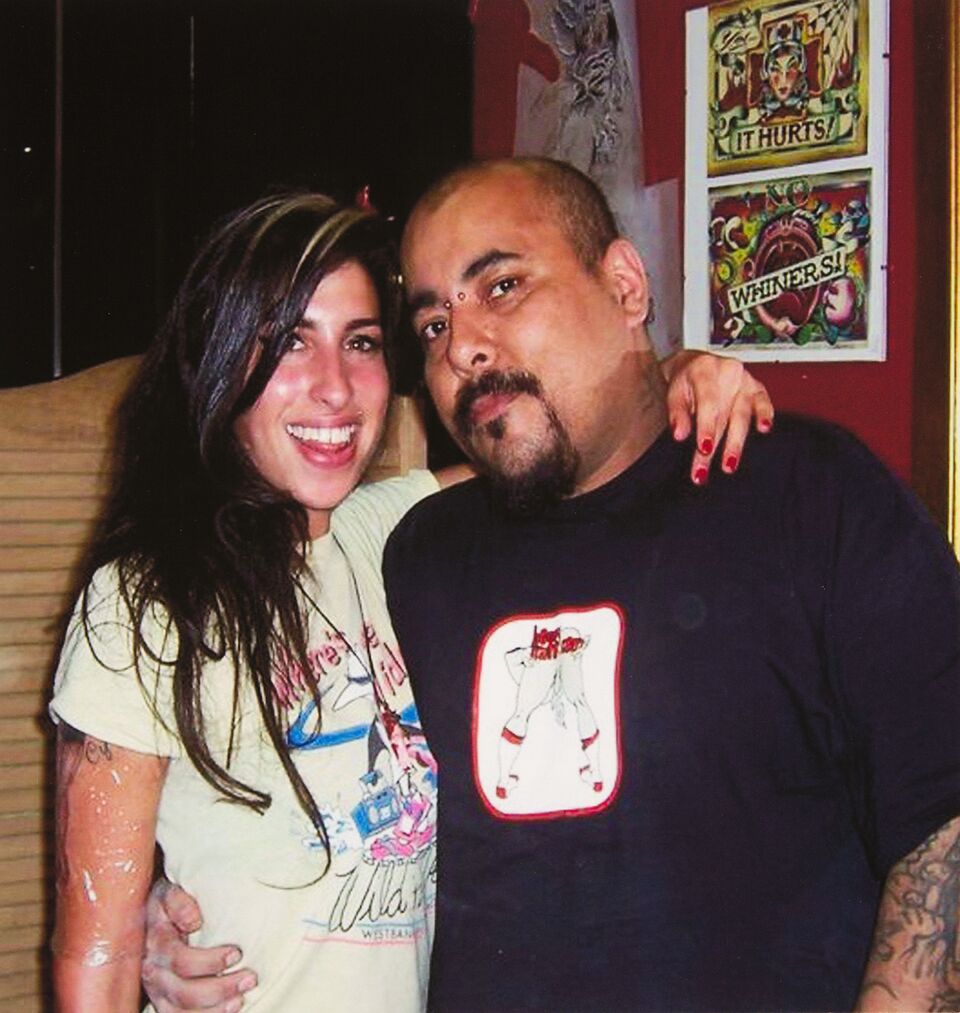
Amy Winehouse and Henry Hate
Whenever someone as iconic as Winehouse dies, their death is always followed by mulitple stories of their life, in print and on film. Perhaps the most useful of these in Winehouse’s case was Asif Kapadia’s 2015 documentary Amy, which went some way to correcting the narrative tabloids had built up around her (while admittedly, narrativising heavily the final days of her life).
Now, the Jewish Museum has re-opened its exhibition, Amy Winehouse: A Family Portrait, to add another, more personal, layer to Amy’s story. The exhibition was co-curated with Winehouse’s brother, Alex, and sister-in-law, Riva. I’m meeting Henry because he gifted the exhibition the original photo used for her pin-up girl tattoo, and the drawing he did as a template.
Sitting back in Henry’s chair to get tattooed by him, surrounded by crucifixes and knifes, he tells me about the first day they met. It was – as ever with Amy, apparently – energetic and unplanned. “She said, ‘I want a tattoo right now,’ after ripping pages out of a pin-up book in reception,” he says, gun poised. “It was about three minutes in when I realised who it was. She was about 30 or 40 pounds lighter and a foot shorter than I’d imagined from that vavavoom voice. I rang my boyfriend to tell him I was going to be home a bit late. She was very specific about what she wanted. She wanted it to look already old, and used the words Sophia Loren and silver screen goddess. She said what I did originally was too perfect, so I had to re-do it.”
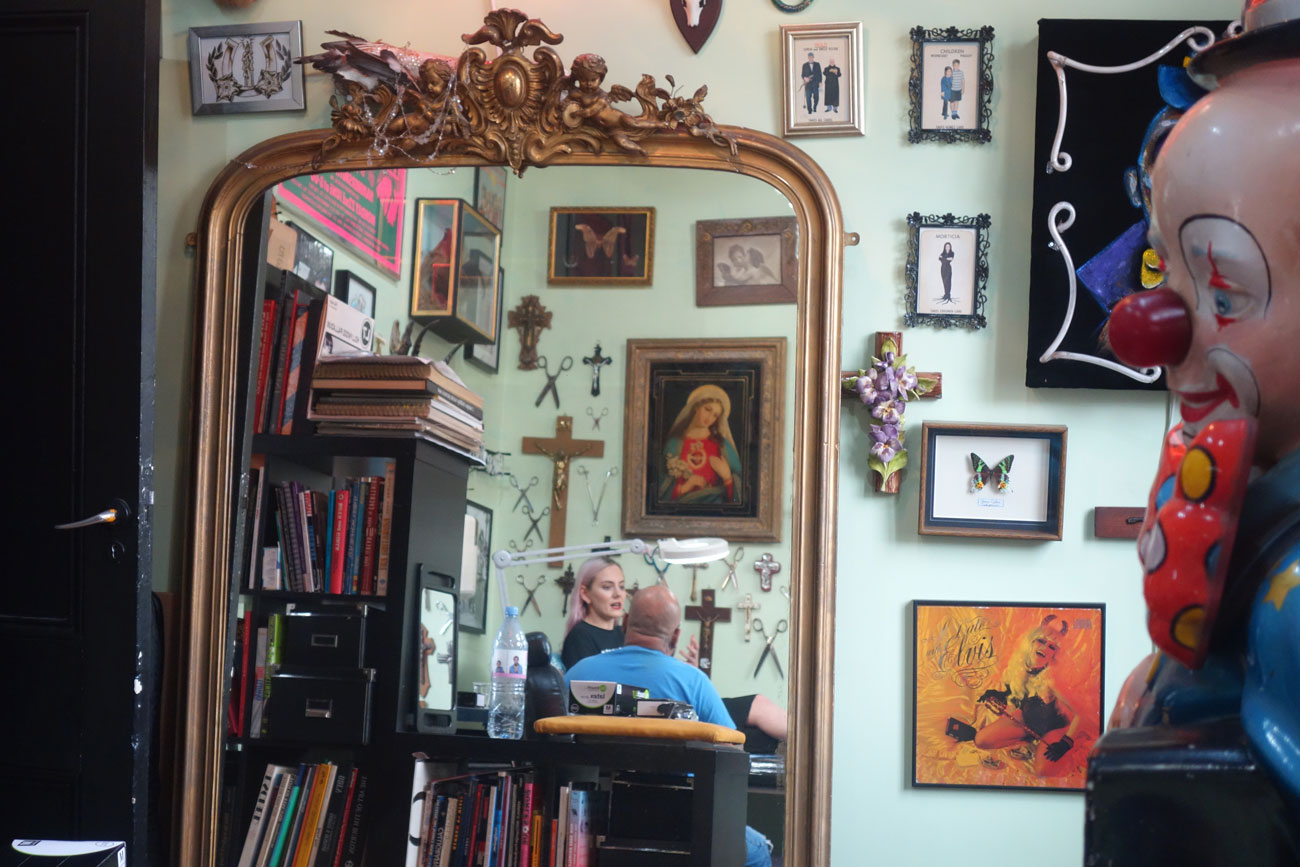
The author being tattooed by Henry in his studio
Henry has a back catalogue of Amy stories and he’s willing to share them, considering he knows that’s why I’m here: to spend time thinking about the “real” Amy, however superficial that act may inevitably be. Their relationship, I had forgotten, went deeper than just tattooist and client. In 2009, The Sun ran a cover story on Henry, disclosing private information without his consent. No longer was it just Amy Winehouse who was hot property for bulldozing; now her tattoo artist and friend was too. At the time, Amy was in St Lucia, on the prolonged holiday that family hoped would help rehabilitate her.
Henry’s distress at recounting the way The Sun’s behaviour affected him makes it uncomfortably clear what that same treatment would have done to anyone if repeated daily, weekly, monthly; when, every time you tripped up, strangers would use the opportunity to push you down the hill. “When you have things flung at you like she had, you don’t know how to handle it,” says Henry. “A very specific part of me was taken without my asking. Amy rang from St. Lucia when the paper went out – she didn’t have to call. She told me not to worry and that everything would be fine. I never forgot that.”
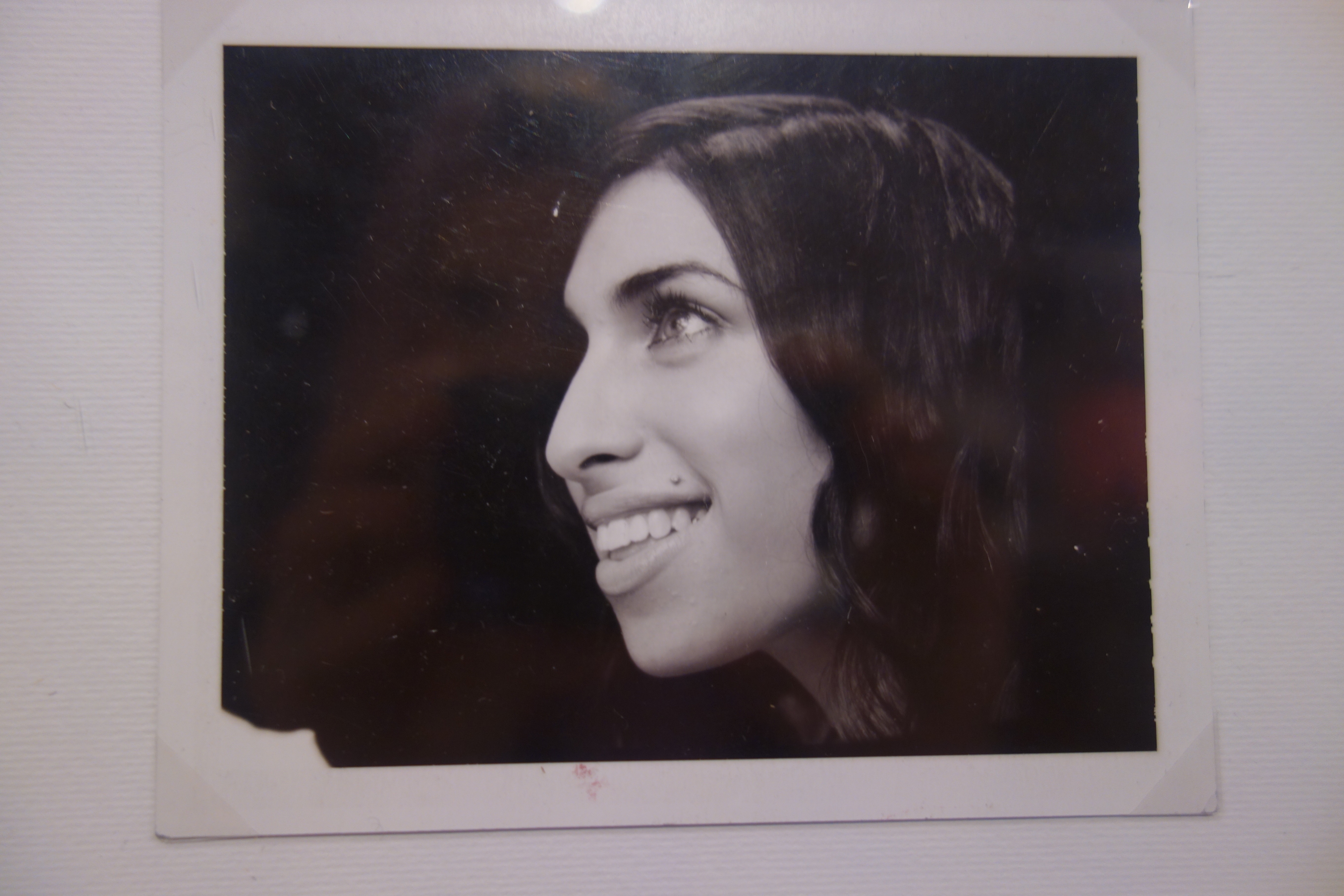
A photo of Amy Winehouse from the exhibition
I take the opportunity to ask Henry what he thinks of the exhibition, guessing he’ll be honest about these ongoing efforts to memorialise Winehouse.
“I do think it’s good, because it brings more people to her small, incredible body of work, which speaks for itself,” he says. “How can that voice come out of a tiny Jewish girl? It’s an anomaly. It’s a three-headed snake driving a tricycle: just something you have to stop and look at. She gave people a perspective into the human condition through her lyrics and music, and connection is a very healing facet to human nature. If the exhibition brings insight into that, then hopefully they will stop looking at a caricature and start looking at a living, breathing human girl.”
Henry calling the public perception of Winehouse “a caricature” is apt. With her beehive and tattoos and striking features, she unintentionally invited people to see her as a larger-than-life character – more than a “human girl”. This false reality has cemented itself after her death.
A few days later I head to Amy’s spiritual home, Camden. Alongside the opening of the Jewish Museum exhibition is a new Amy street art trail. The idea is to walk her old neighbourhood to experience some part the life she lived. The concept is pleasant enough: Amy loved Camden like she loved London – ferociously – and was regularly spotted in its pubs and bars. For tourists who want to explore Camden while paying homage to its patron saint, it’s ideal. But because I don’t like most street art aesthetically, I didn’t enjoy the wall pieces as memorials. Each mural is understandably bright and garish to reflect and celebrate the subject, shunning doom and gloom. Some I thought were fun, but others, made me wonder whether she’d laugh at seeing herself painted in clashing hues across a bar wall. As with any sort of memorial, those “What would X think?” questions hang in the air.
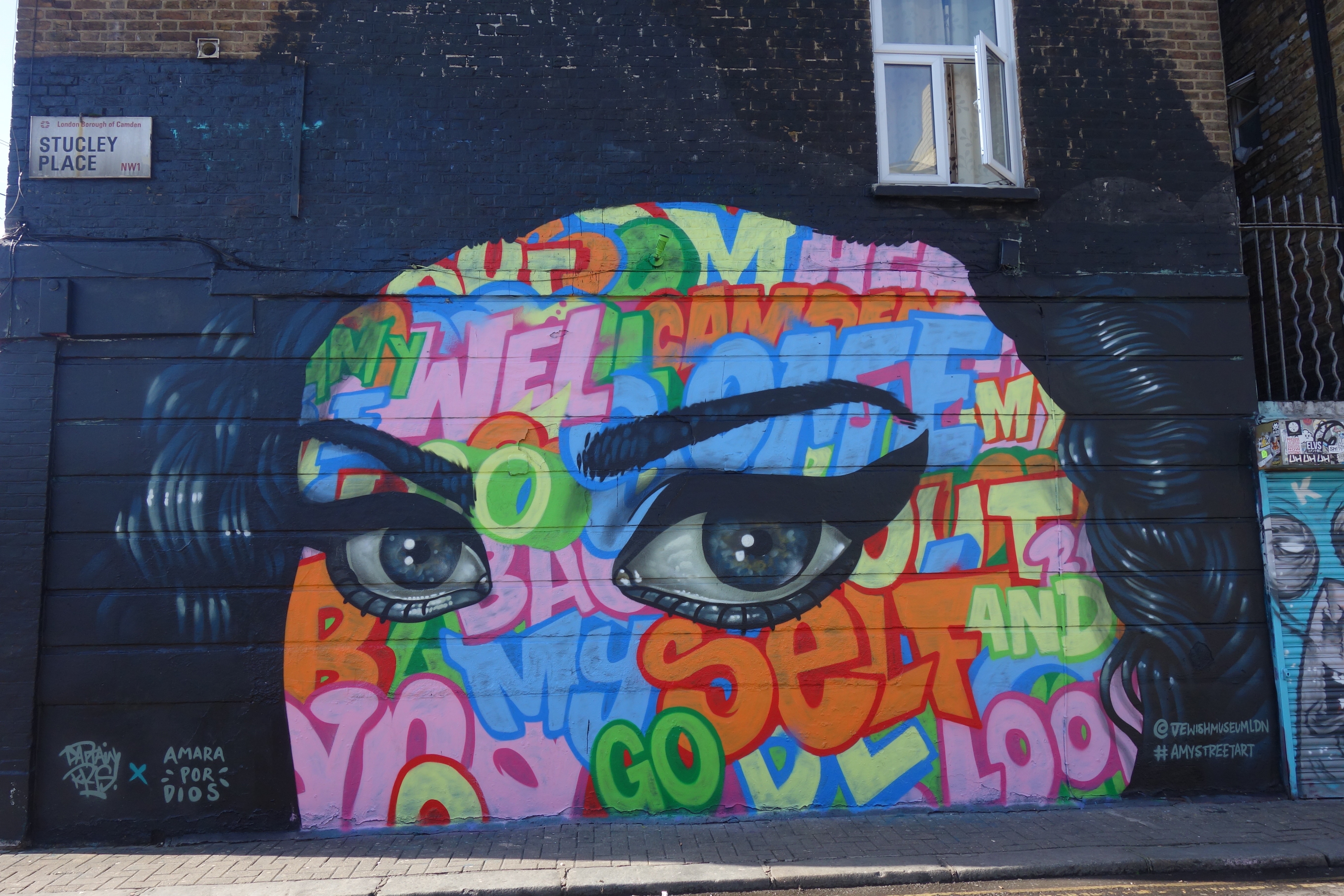
A piece of the street art (Photo by author)
The trail ends inside the museum, and the final pieces of work by street artist Pegasus sit just inside the entrance. As soon as you come up the stairs to the exhibition you’re confronted with a life size photograph of her. It’s enough to give you a lump in your throat, partially because you double take that she’s stood right there, and partially because it’s a rarely seen photograph of her, which works to immediately take her out of preconceived contexts.
The fact the exhibition was co-curated by Amy’s brother provides a refreshing insight. There are the books both Amy’s mum and dad have written, but siblings love and hate each other more than anyone else ever could. Siblings understand each other on an almost psychic level, with a dear closeness and a cynical distance; they’re of the same generation and understand the nuances of a family dynamic from the same perspective. They’re you but not you.

Amy’s outfits (Photo courtesy of The Jewish Museum)
Alex’s commentary shares Amy, the person. There’s a folded school sweatshirt, the kind every British kid once pulled on, with the same plain name tag sewn into the neck: Amy Winehouse. It’s strange to see that name stripped of celebrity; just the name of a little girl. Strange that there was a time when it meant nothing more than that.
In the photos of her childhood she has an energy that pulls her into focus. There’s one image of her aged 11 – a primary school photograph – where everyone is smiling and posing nicely for the camera, while Amy, in the centre of the frame, is leaning forward with her legs spread, like she’s challenging the lens.
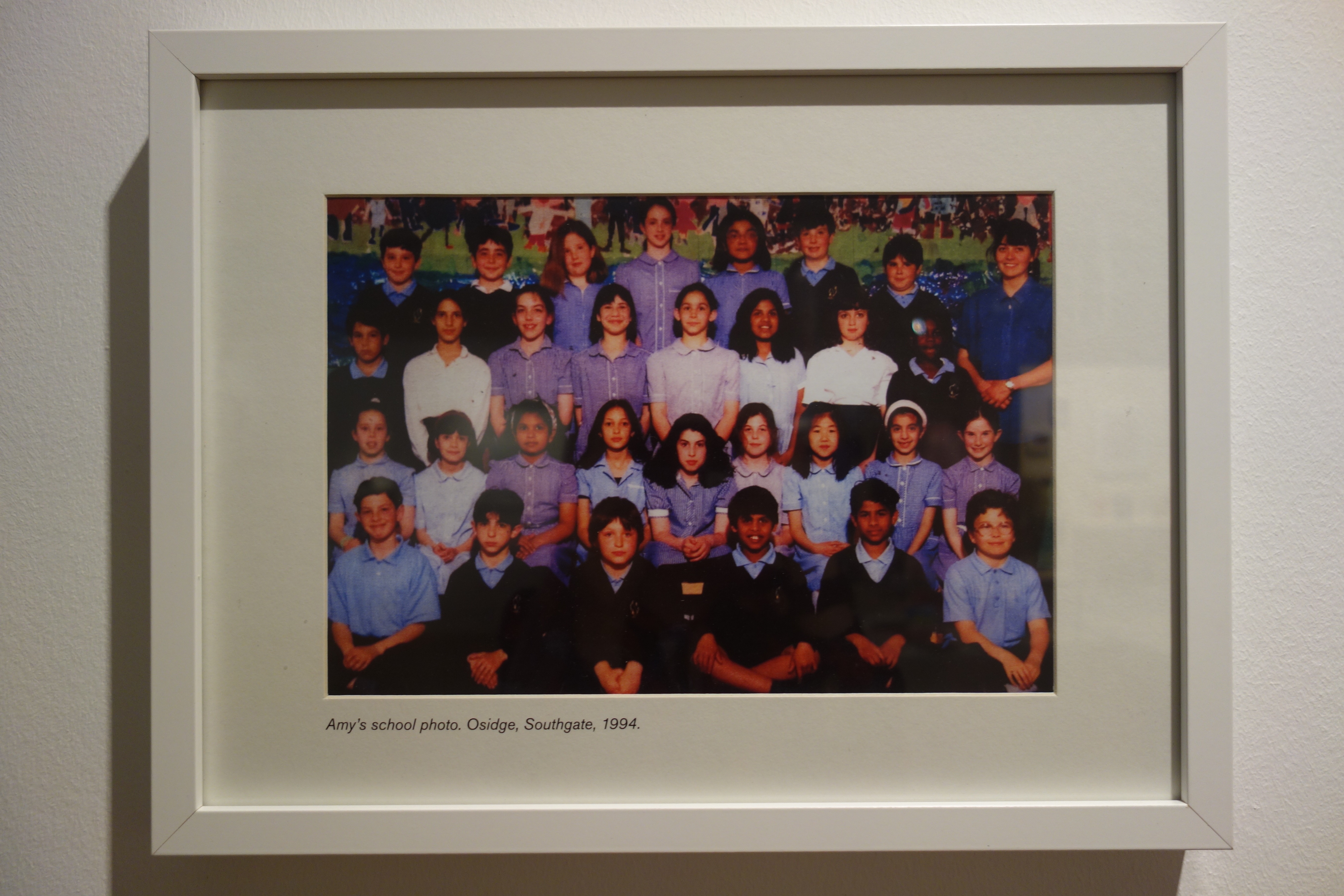
Amy at school (Photo by author)
Her tiny outfits, hanging on a rail, are clinched in at the waist, hugging a frame no longer there; parts of her record collection are annotated by her brother, telling you what they used to listen to; there are copies of the books she loved; snapshots of her upbringing. It still feels worth learning about her in these ways, and it makes sense to do it now, with people who were close to her still around to share.
“Amy was so charitable and so kind. I would like to think she is looking down thinking, ‘I would want this to happen,’” Henry says of the exhibition. “With this next exhibition they wanted to show a second chapter going deeper than those preconceived ideas of what she was like. But also because she is gone, there will always be this kind of ghost in the room at these things.”
There’s a lot that feels like loss in that room, but my favourite revelation from the exhibition is that she liked those terrible vintage-style magnets with the lightly crude jokes you find printed on Clinton cards, declaring love for Prozac and a glass of wine. She had the same “Better than to have loved and lost than to stay with a psycho for the rest of your life” one that my mum has on her fridge. You can buy them all over Camden market. At the risk of imposing another false narrative on who she was, it’s nice to imagine Amy Winehouse walking past the stalls, cackling with laughter when one took her fancy.
Amy Winehouse: A Family Portrait is running at The Jewish Museum, London from the 16th of March to the 24th of September 2017.
More on Amy Winehouse:
The Problems With the New Amy Winehouse Documentary
Talking to the Director of the New Amy Winehouse Documentary
More
From VICE
-

Cole and Calvin, cousins, 2017. All photos courtesy of the artist and Dallas Contemporary. -

Jennifer Beyer/Peacock -

Lauren Levis, who died after taking iboga at the Soul Centro retreat in 2024. (Photo courtesy of the Levis family) -

Photo by Spencer Platt/Getty Images
